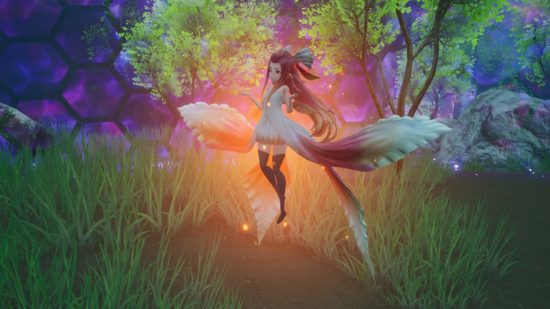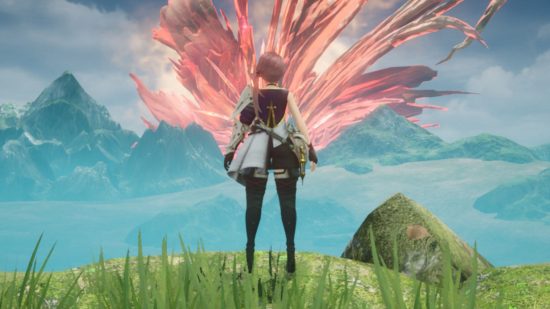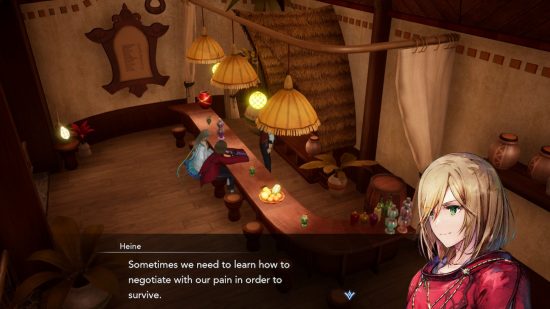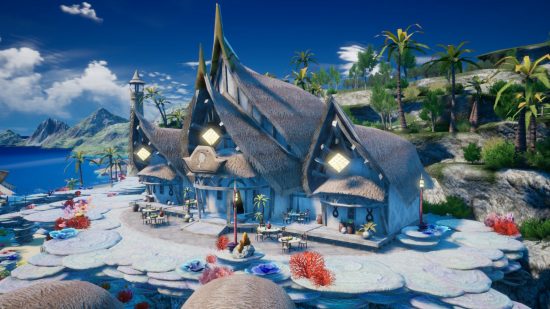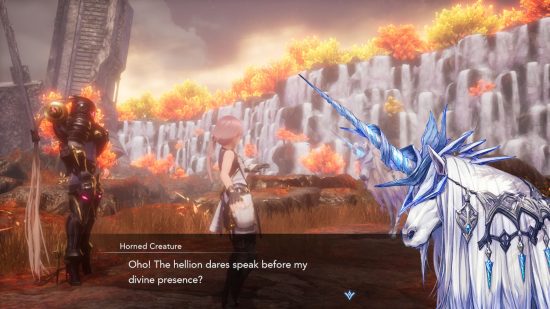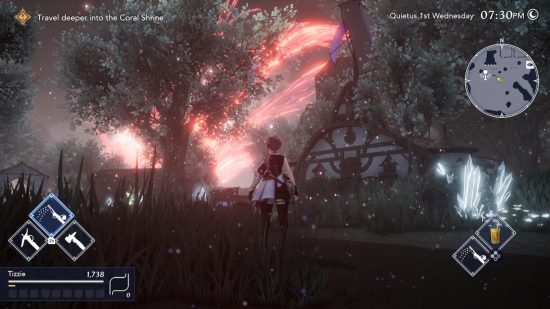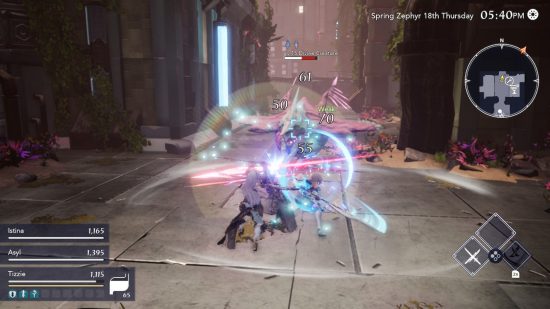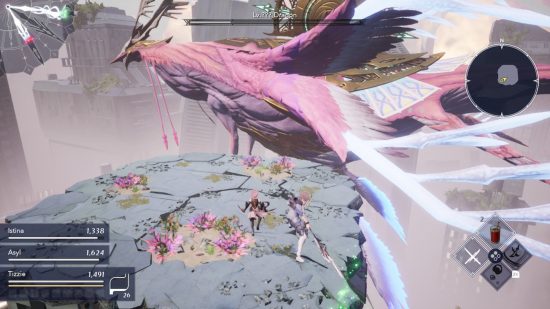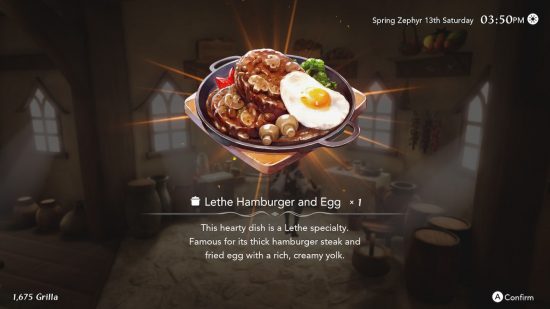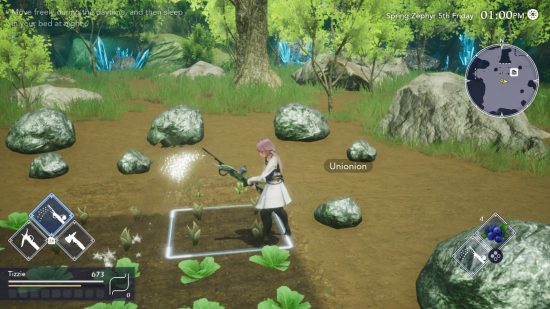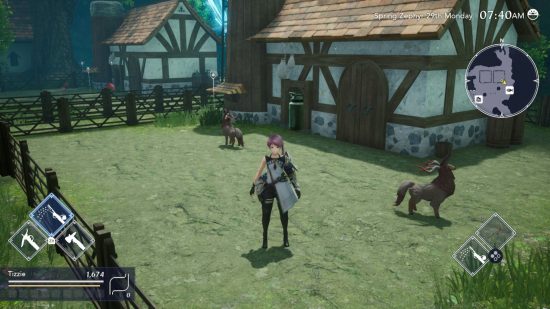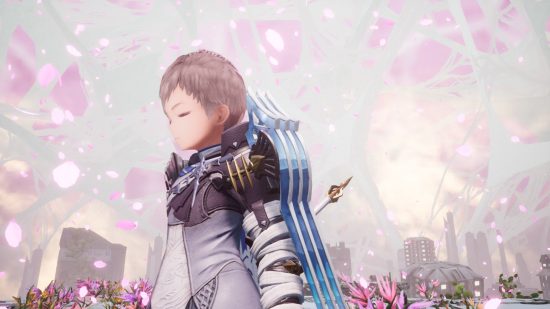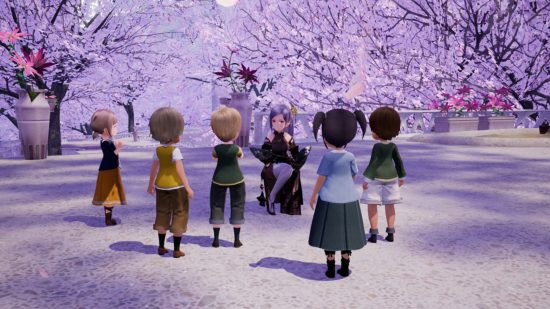Our Verdict
A flawed but beautiful JRPG with farming sim elements, Harvestella boasts a unique and emotive narrative, gorgeous art direction, and an ambitious range of mechanics to explore. It’s slow to start but, with a bit of patience, blossoms into something truly memorable.
As a massive fan of Square Enix, JRPGs, and farming sims, it’s safe to say that Harvestella is one of my most highly anticipated games of 2022. So, naturally, I jumped at the opportunity to dive into this exciting new experience on Nintendo Switch.
Since I first wrote up my review in progress on Friday, I’ve spent many more hours enveloping myself in its world. I’ve been fighting monsters, harvesting crops, appeasing my faerie overlords, and escorting children away from danger nearly every waking moment of the day. And yet I’d still guess that I’m less than halfway through with so much more to discover. But honestly? I’ve fallen head over heels for it.
Harvestella has met very mixed responses over the last few days, quickly proving itself to be highly divisive, and in some ways, I can see why. It’s certainly not for everyone. If you don’t enjoy long-winded JRPGs, complete with ten-hour introductions, grandiose (and sometimes ridiculous) narratives, winding side quests, and the need to learn about fifty different overlapping mechanics, then this isn’t for you. Harvestella has classic JRPG in its blood, far more so than anything else, and if you come into it expecting a life sim first with some ARPG elements, you’ll be sorely disappointed.
Let’s begin with the plot. At surface level, Harvestella has an intriguing narrative that takes some of the familiar tropes JRPG and Square Enix aficionados should be very familiar with, while also applying its own unique twist. It begins with probably the most common trope from the RPG genre – you’re an amnesiac, and you don’t remember how you got here. What a surprise.
As you begin to piece together this unfamiliar world, you discover that you’re pretty darn special. Somehow you managed to survive being outside during a phenomenon called ‘Quietus’, which comes about between every season and kills just about everything in its path. The townsfolk blame this phenomenon on creatures they call ‘Omens’, so when one crash lands in the village along with a giant shiny meteor, you naturally go inside and save them (much to the chagrin of your new acquaintances).
From here, you’re sucked into a grand world based on a classic, fantasy foundation, adorned with intriguing sci-fi elements that give the game that true Square Enix flair. And, beneath the fantastical themes of time travel, cryptids, monsters, and fairytale creatures, there’s a myriad of surprisingly deep and emotive narratives revolving around loss, the cyclical nature of life, and coming to terms with trauma and one’s own fate.
From synthetic humans defying their purpose as destructive weapons to orphans putting themselves at risk to visit their parents’ grave, or sabotaging their chances of adoption to ensure another child gets a chance of having a real family, there’s much beauty to be found in the sorrows of Harvestella.
Though at times convoluted, the stories that surround you find a wonderful balance between melancholy and hopefulness, leading to many touching moments that I found to be unexpectedly profound. Plus, there’s also the occasional comedic, light-hearted side quest sprinkled in to ensure things don’t get too heavy, and you’re free to dip and dive between the main and side quests at any time.
One thing that does disappoint me about the narrative, though, is the lack of voice acting. The only audible dialogue comes in fleeting, non-committal lines, such as a party member informing you that their health is low, or a shopkeeper greeting you. This leaves hours of walls of text in cutscenes, with nothing but the (admittedly lovely) background music to fill the silence.
While I understand that, given the amount of dialogue and story in the game, getting a team of actors to fully voice it would be a colossal task, the absence of voice acting in even the most important cutscenes feels a little cheap, especially for a full price, triple-A game.
When it comes to art design, I personally find Harvestella to be truly beautiful. While textures can sometimes look a little murky or blurred, especially in handheld mode, the environmental design sets up breath-taking landscapes, idyllic towns, and cosy interiors, all of which truly capture the essence of Square Enix’s signature style while still offering enough individuality and variety to nurture your desire to explore.
I find myself genuinely excited when reaching a new map, with the standouts for me so far being the dystopian landscape of Heaven’s Egg and the shimmering seaside town of Shatolla. The 2D character sprites and the illustrations depicting meals, machines, and animals, as seen in the crafting and encyclopaedia pages, are also gorgeous, and add a lovely touch of personality to the overall style. All of this is also backed by a stellar orchestral soundtrack that truly brings life to the beauty.
Admittedly, the character creation options for the protagonist are very limited, with only four body types to choose from and a standard palette selection for hair, eye, and skin colour. The 3D character models in-game can also look a little blocky or fuzzy depending on the situation and what type of screen you’re playing on.
However, I love the different outfits the protagonist dons as you change jobs, and the character and enemy designs are brilliant. There’s a great breadth of variety, from the normal townsfolk and their wizardly mayor, to the heavily armoured Omens, and even an absolutely delightful unicorn adorned with jewels. I also adore the faeries that join you along the way, and the boss designs are equal parts intimidating and gorgeous.
Additionally, the overworld map is a delight. Harvestella isn’t an open world game, instead consisting of different locations such as Lethe Village, your farm, and Shatolla, along with ‘dungeons’ such Njord Steppe, Heaven’s Egg, and Jade Forest. You access each of these easily by running from location to location in a beautiful (albeit somewhat blurry) overworld map, which you can later traverse quicker by purchasing an absolutely adorable mount.
The first two dungeons you explore are relatively linear but get far more complex as you progress, with large FEAR monsters that you need to sneak past, unique mechanics such as flower walls that need to be melted with looted potions, and air currents and water fountains you can ride to get to secret locations.
When exploring dungeons, you must remain mindful of the passage of time, as if it gets to midnight and you’ve not yet made it to your bed (or you get slain by an enemy), you pass out from exhaustion and have to pay a fee for your medical treatment.
Luckily, you can activate waypoints which allow you to save and teleport within the location you’re currently exploring, or back to your home. You can also fix ladders and bridges to open shortcuts you can use the next time you visit the area. You aren’t meant to complete dungeons in one day, and with these useful mechanics, you don’t have to do as much legwork to get back to where you left off.
This mechanic took me a little while to get into the rhythm of, as a fast-moving in-game clock feels common in a life sim, but a little out of place when you’re exploring new lands and felling foes. It can also break the immersion a bit when you’re in the middle of a rescue mission but still need to adhere to a strict bedtime curfew. However, with a little trial and error, I’ve come to love being able to freely break up my adventures, popping back home to tend to my crops or have a chat with a villager.
Harvestella’s combat is very interesting, if not a little limited to begin with. Following the classic real-time action combat formula as opposed to turn-based, you’re free to run around attacking monsters, or skedaddle out of there if you bite off more than you can chew.
The job you equip is what dictates your combat style, with new jobs opening up as you progress through the game and invite new companions into your party. You can equip a maximum of three jobs at a time, each with their own skills and damage types, so you can switch between them on the fly.
Every job also has its own skill tree, which you upgrade with job points you earn by using that specific job to defeat enemies. Switching jobs in the field and using their abilities feels a bit clunky on Switch, requiring you to hold down a trigger while hitting another button. However, it offers some interesting flexibility and utility in battle.
The action combat focuses more on strategically planning out your actions as opposed to dodging and parrying or charging at your enemies until they die. You don’t have access to a dodge by default, and need to unlock it as a skill for each class – and, even then, it’s more of a stiff dash with a short i-frame than it is a functional dodge.
It took some time for me to adapt to the dodge being so limited, but it adds to the turn-based-inspired version of action combat that makes up Harvestella’s identity, with combat feeling closer to Xenoblade than anything else.
The basic rotation revolves around you switching between classes to use skills as soon as they’re off cool down, and learning to take advantage of the damage weaknesses of your enemies. Often, you’re faced with a group of different enemies that each have their own weaknesses and resistances, which adds even more weight to the importance of learning and levelling different classes.
The combat also becomes increasingly more reliant on your ability to make different foods and drinks as you progress. Food regenerates satiety, stamina, and health, with many meals also offering great buffs to your attack, cool downs, and more. However, when you’re full, you can’t eat any more meals, which is where drinks come in. Drinks restore health, and some also give you start boosts, but don’t affect your stamina and are generally quicker to consume.
Generally, if you intend to make any substantial progress through a dungeon in one day, you need to have a good balance of meals and drinks that suit your playstyle and the enemies you’re facing. While this may be difficult for some players to adapt to initially, it’s a clever way to reward you for nurturing your farm. Essentially, if you have plenty of crops going and machines brewing, you should have ample restorative items to get you through battles – thus, the better a farmer you are, the better a fighter you are.
On that topic, let’s get into the farming sim elements of the game. At the beginning of the game, you’re given a home with a plot of land outside called Birds Eye Brae, which essentially becomes your centre of operations. Inside the house, you can unlock different stations for crafting, cooking, and more. Outside, you’ve got plots where you can grow and harvest crops, and two pens you can upgrade and use to keep livestock.
The farming controls are similar to the combat ones, meaning they feel a bit clunky at first and get some getting used to. However, when you get into the swing of your rotation of tools, it becomes second nature. Seasonal seeds are pretty easy to get a hold of, with many dropping in dungeons or being sent to you in the mail. Quietus comes at the end of each season and kills off all crops except shrubs and trees, but the game gives you plenty of notice to prepare and harvest before then.
All of the farming and life sim elements feel pretty restrictive at first, but they begin to truly open up in the third chapter. At this point, you unlock the faery orders book, which sets you tasks in exchange for blueprints and goods. The blueprints allow you to craft useful machines and processors, such as a flour mill, a fermentation barrel, and a feed maker, which save you money and open up more options for cooking. The faerie orders book also offers upgrades to your tilling, harvesting, and watering skills among others, making your work far more efficient.
As mentioned above, you can also get the renovator to upgrade the pens on your farm, in which you can keep livestock purchased from the Conellu Emporium in Lethe. The woolums and cluffowl you rear are adorable, and, despite being expensive at first, are certainly worth it in the long run, as they take little maintenance and offer a steady supply of milk, eggs, and sell-only products that make you some extra cash.
You can also fish – a staple in this type of game – though fishing is very simplistic, with it being little more than a waiting game, and the fish you catch are far better used in recipes as opposed to selling, as they earn you very little money.
On the life sim side of things, Harvestella is pretty limited. NPCs are often stationary in the same spot throughout the day, leaning more towards classic RPGs as opposed to life sims where everyone has their own life to go about. However, there is a friendship system by which you complete character-specific tasks such as delivering someone certain items in order to deepen your bond with them. Depending on the character, this nets you useful items or stat bonuses if they’re in your party.
Honestly, there’s even more at play in Harvestella that I’m not covering here, all of which adds up to make a very thoughtful and enjoyable experience. However, I feel the main issue is that it takes so long to open up. Many of the elements that make this game so special don’t arrive until chapter three or later, and, depending on your personal playstyle, that can take up to ten hours.
First impressions are very important, and I feel the slow start to this game is just too steep of a hill for many casual players and those who aren’t familiar with the JRPG genre to climb. Additionally, it’s important to approach Harvestella with realistic expectations when it comes to what type of game it is. This is a JRPG first and foremost, and, while the other elements certainly open up later, if you come into this expecting a real farming sim, you’ll be disappointed.
Overall, I genuinely love Harvestella, but I acknowledge that it really isn’t for everyone. However, if you approach it with an open mind, a love for the JRPG genre (flaws and all), and enough patience to make it through the first ten hours of rather slow gameplay, you’re in for a real treat.
Despite some shortcomings, clunky mechanics, and restrictions, Harvestella has quickly become a true comfort game for me, emitting an aura of nostalgia for the epic adventures I embarked on during the days of the PS2 and Nintendo DS, and I see myself returning to it again and again, long after I’ve completed it.
If you’re ready to embark on this adventure, be sure check out our Harvestella characters, Harvestella cooking, and Harvestella romance guides to start off on the right foot. I wish you a happy harvest.
